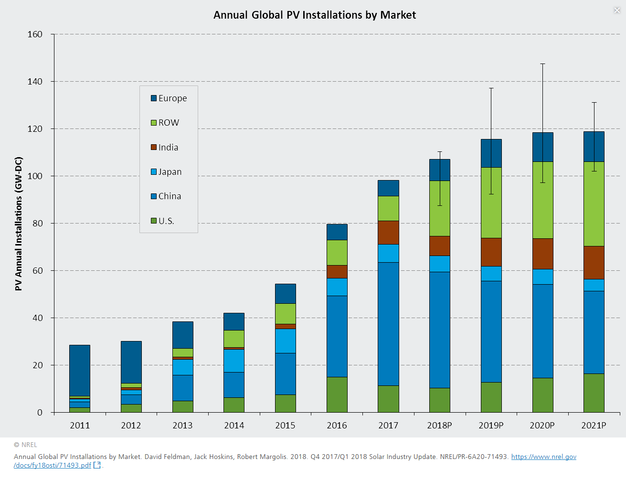Since the first workshop two years ago, the amount of photovoltaic (PV) electricity generating capacity installed worldwide nearly doubled to a cumulative 400 gigawatts from 230 gigawatts. The alliance was formed in 2012 and includes the three world leading solar research institutes, the National Renewable Energy Laboratory, NREL (USA), the National Institute of Advanced Industrial Science and Technology AIST (Japan) and the Fraunhofer Institute for Solar Energy Systems ISE (Germany).
By the end of 2023 or even sooner
“Due to significant advances in research and manufacturing, solar PV electricity is now cost-competitive in many locations worldwide. Significantly more PV has been installed in the past few years worldwide than we had anticipated. Most of the experts who gathered at the GA-SERI meeting predict that the terawatt goal will be reached by the end of 2023 or even sooner,” says Dr. Andreas Bett, Director of the Fraunhofer Institute for Solar Energy Systems ISE. With a compound annual growth rate in installations of 25 percent, the current trajectory suggests the world could reach about 7 TW from PV by 2030.
PV will be able to supply a majority of primary energy needs
For the second workshop, experts from Germany, Japan, the United States, and seven other countries gathered in Golden for two days to discuss the future of PV. Solar PV is on a trajectory to provide a majority of the world’s electricity, reach multi-terawatt scale, and address broader global needs for clean air and economic development. With transportation and other energy sectors beginning the move toward electrification, workshop participants discussed analyses indicating that solar PV will be able to supply a majority of primary energy needs and play a critical role in stabilizing the grid.
A key element of solar’s success will be a partnership with wind, hydropower and bioenergy and a range of storage and load-shifting technologies that are also showing dramatic progress.
GA-SERI members concluded a fully integrated research program among institutes, universities and industry, spanning both near- and long-term needs, can address challenges to further reduce cost of solar electricity and enable solar’s enhanced roles in stabilizing the grid and powering other sectors of energy demand. Representatives from the three research institutions and other workshop attendees will collaborate to better define the opportunities for solar and address the barriers that need to be overcome. Just as was done after the first Terawatt Workshop, the group intends to publish its conclusions and supporting analyses.
Text: Fraunhofer ISE







0 Kommentare